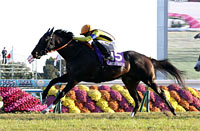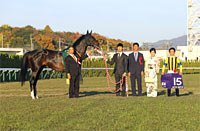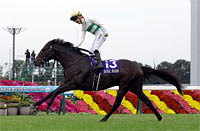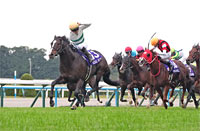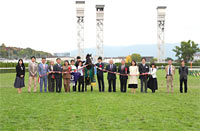2015 News
Data Analysis for the “2015 Mile Championship (G1)”Mile champion decider with potential for surprises The Mile Championship used to be known for strong performances by the favored horses – in the first 11 years, for example, the favorite always finished in the top 2. But looking at more recent results, we find some notable surprises; the winner in 2010 was 13th favorite A Shin Forward, while in 2011 the 11th favorite Fifth Petal finished 2nd, and in 2014 the race was won by 8th favorite Danon Shark. So what sort of outcome awaits us this year? Let’s check race trends from results over the last 10 years to search for an answer. Mainly 4- and 5-year-olds A look at performances by age over the last 10 years shows that “4-year-olds” and “5-year-olds” have been most successful. These two groups have provided all 10 runners-up in that time, a point worth noting this year as well. Contrastingly, the 35 “3-year-olds” have produced only two 3rd places and nothing else. What’s more, the only horse aged “7 and up” to finish in the top 3 was 2009 winner Company (8-year-old). [Table 1] [Table 1] Performance by age (last 10 years)
Check performances by horse number Turning next to performances by horse number (in pairs) over the last 10 years, half of the 1st and 2nd places have been taken by the pairs “5, 6” and “7, 8”. On the other hand, no horse with the number “5, 6”, “7, 8” or “9, 10” has finished 3rd. The distribution of finishes on this basis could also provide useful pointers. [Table 2] [Table 2] Performance by horse number (last 10 years)
Look at the last race contested In terms of the previous race contested by runners over the last 10 years, 15 of the 20 top 2 finishers had most recently appeared in one of the “Tenno Sho (Autumn)”, “Swan Stakes” or “Fuji Stakes.” Of these, the group coming straight from the “Tenno Sho (Autumn)” has notched particularly impressive figures in terms of success ratios. But four horses from “Other races” have made it into the top 2 – one winner from each of the Kyoto Daishoten and Fuchu Himba Stakes and two runners-up from the Mainichi Okan. [Table 3] [Table 3] Performance by previous race (last 10 years)
If we now look at performances by horses coming straight from the “Tenno Sho (Autumn)”, “Swan Stakes” or “Fuji Stakes” in terms of their finish in that race, 13 of those 15 top 2 finishers had finished either “1st” or “6th-9th.” This year, too, it could be useful to check runners previously appearing in those races as well as their finish in the race in question. [Table 4] [Table 5] [Table 6] [Table 4] Performance by finish in the previous race when it was the Tenno Sho (Autumn) (last 10 years)
[Table 5] Performance by finish in the previous race when it was the Swan Stakes (last 10 years)
[Table 6] Performance by finish in the previous race when it was the Fuji Stakes (last 10 years)
Look for a positive reaction by horses beaten to 4th or lower in the Yasuda Kinen In each of the last 10 years except 2011, horses that were “Beaten to 4th or lower in that year’s Yasuda Kinen” have finished 1st or 2nd in the Mile Championship. Given the different course format and many other differences between the two races (though both are turf 1,600m G1 races), we ought to take a good look at the result of the Yasuda Kinen, the spring mile champion decider, when weighing up prospects in the Mile Championship. [Table 7] [Table 7] Top 2 finishers in the Mile Championship beaten to 4th or lower in that year’s Yasuda Kinen (last 10 years)
Seek out the winner! The last three winners of this race had all been “Backed as 1st favorite but beaten to 7th or lower in a graded race within the last five outings.” The important point is that these horses had been tipped as favorites to win a graded race, whether they lived up to that billing or not. [Table 8] [Table 8] Races in which winning horses were backed as 1st favorite but beaten to 7th or lower within the last 5 outings
(Data analysis by Yasunori Asano) |
|
||||||||||||||||||||||||||||||||||||||||||||||||||||||||||||||||||||||||||||||||||||||||||||||||||||||||||||||||||||||||||||||||||||||||||||||||||||||||||||||||||||||||||||||||||||||||||||||||||||||||||||||||||||||||||||||||||||||||||||||||||||||||||||||||||||||||||||||||||||||||||















